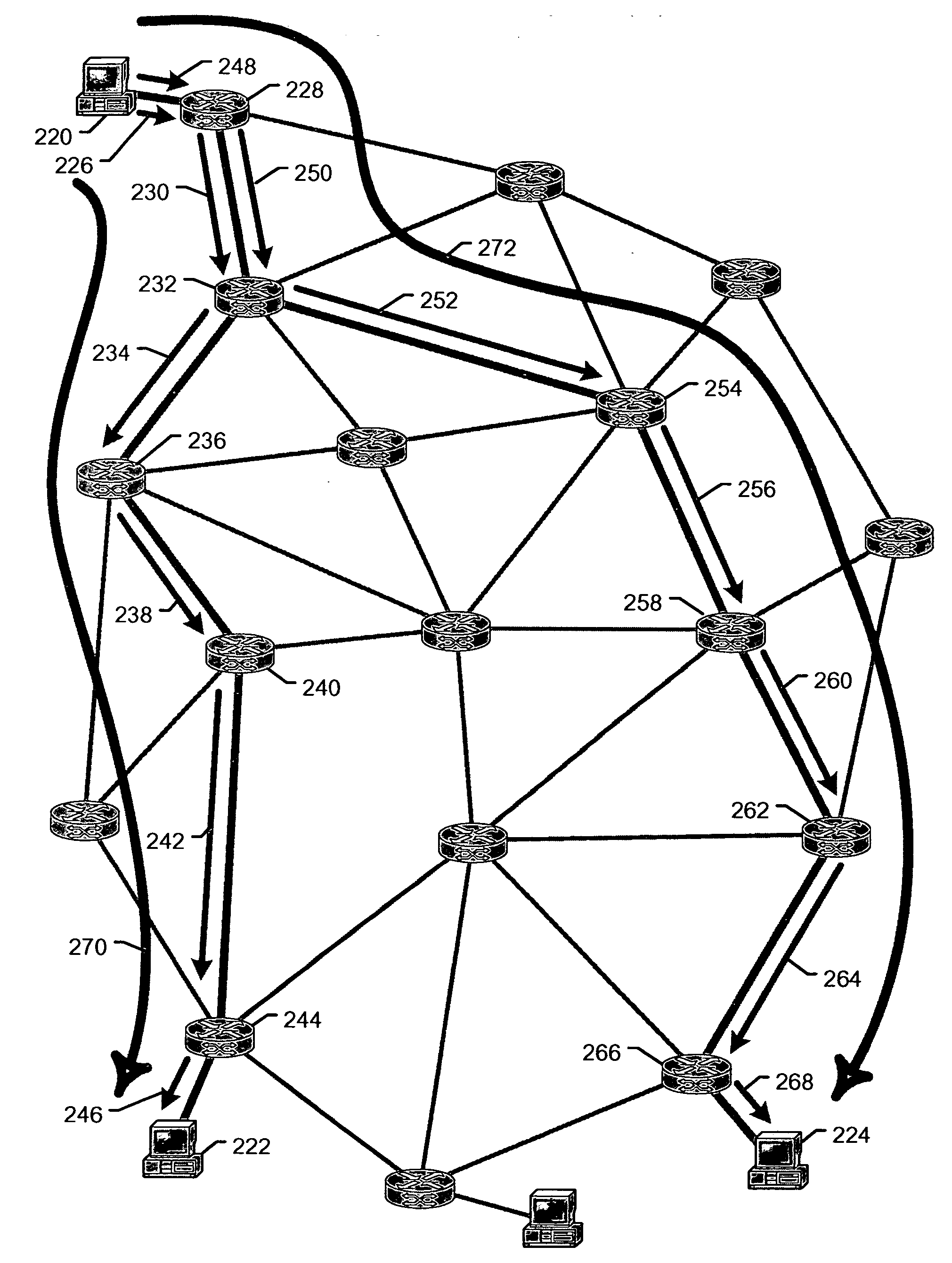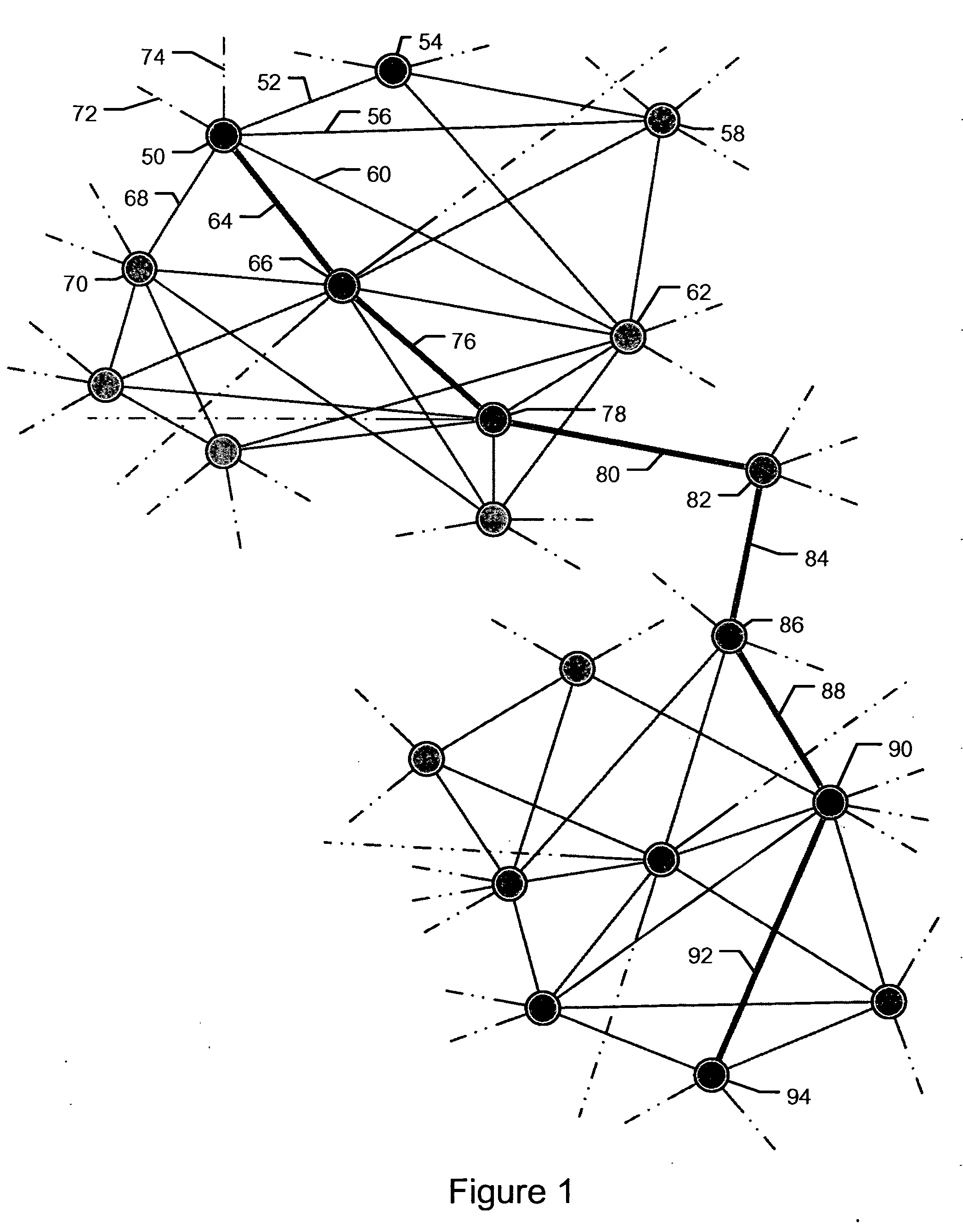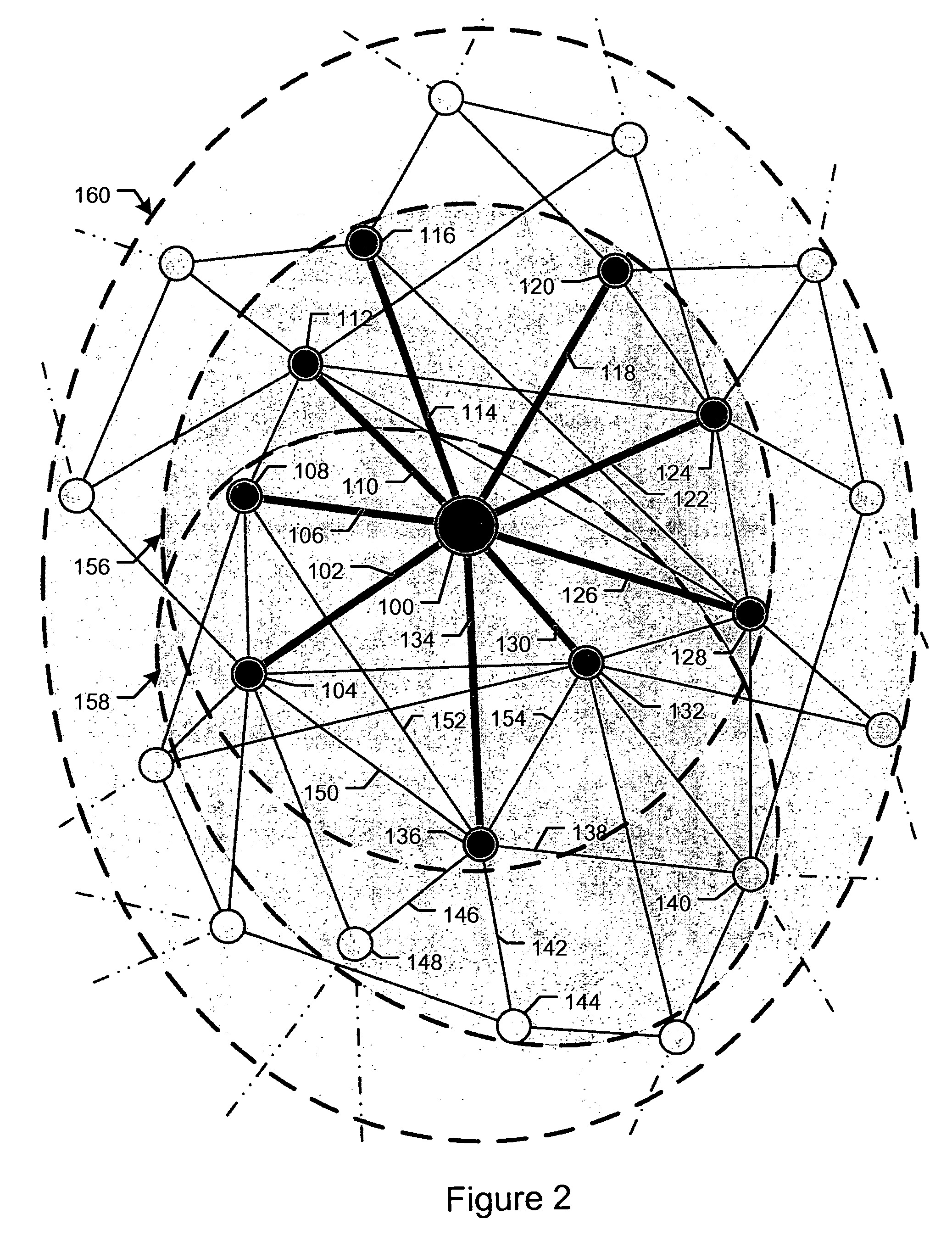System and method of implementing contacts of small worlds in packet communication networks
a packet communication network and network technology, applied in the field of communication systems, can solve problems such as unmanageable complexity and scale, impose challenging constraints, and constantly change and evolve the system network,
- Summary
- Abstract
- Description
- Claims
- Application Information
AI Technical Summary
Benefits of technology
Problems solved by technology
Method used
Image
Examples
Embodiment Construction
[0085] A method to determine, establish and maintain a communication path between interconnected communication units (CUs) is an aspect of the invention defined as the Small World Infrastructure (SWI) underlay network. SWI utilizes the relational attributes inherent in the CU of LSPs which are incorporated in a general packet communications network. These relationships or small world contacts determine the paths between source and destination CU of LSPs in the network. These contact paths are implemented as the defining method for composing the Hierarchical Label Switched Path (H-LSP) in a MPLS or GMPLS domain.
[0086] An illustrative portion of a MPLS domain is shown in FIG. 19. The MPL capable network 626 consists of interconnected Label Switching Routers (LSR). The CU of interest 550 is a source or destination node for the communication path to be determined. With a particular set of relational attributes, there exists a set of associate CUs exhibiting direct or first level contac...
PUM
 Login to View More
Login to View More Abstract
Description
Claims
Application Information
 Login to View More
Login to View More - R&D
- Intellectual Property
- Life Sciences
- Materials
- Tech Scout
- Unparalleled Data Quality
- Higher Quality Content
- 60% Fewer Hallucinations
Browse by: Latest US Patents, China's latest patents, Technical Efficacy Thesaurus, Application Domain, Technology Topic, Popular Technical Reports.
© 2025 PatSnap. All rights reserved.Legal|Privacy policy|Modern Slavery Act Transparency Statement|Sitemap|About US| Contact US: help@patsnap.com



